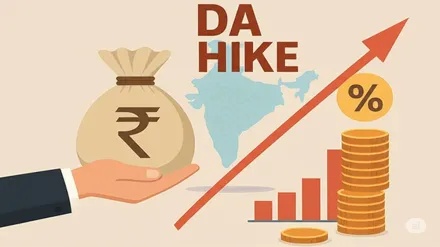
Index Trends Signal Potential DA Increase
The All India Consumer Price Index for Industrial Workers (AICPI-IW) has shown a consistent upward trajectory, rising by 0.5 points to 144 in May 2025. This follows a steady progression from 143 in March to 143.5 in April, indicating a sustained inflationary trend. Analysts suggest that if the index continues its upward movement, a 3-4% dearness allowance (DA) hike for central government employees is likely by July 2025. The current DA stands at 55%, and the final decision will hinge on the June 2025 AICPI-IW data, expected to be released in early August. A 0.5-point increase in June could push the 12-month average to 144.17, leading to a projected DA of approximately 58.85% under the 7th Pay Commission formula. This would result in a 4% increase, marking a slight adjustment from earlier projections.
DA Calculation Formula and Timeline
The DA is determined using the average AICPI-IW of the past 12 months, with the 7th Pay Commission’s formula guiding the calculation. The formula DA (%) = [(CPI-IW average of last 12 months) – 261.42] ÷ 261.42 × 100 ensures adjustments align with inflationary trends. While the new DA will take effect from July 2025, the government typically announces the hike in September-October, coinciding with the festive season. This year, the announcement is expected around Diwali, providing employees with timely relief. The 7th Pay Commission’s term expires on December 31, 2025, making this DA hike the last under its framework. Meanwhile, the 8th Pay Commission, announced in January 2025, remains in limbo with no updates on its Terms of Reference or panel members.
Pay Commission Delays and Arrears Payments
The 8th Pay Commission’s delayed implementation could push its recommendations to 2027, leaving central employees reliant on existing DA hikes. However, the government plans to address this gap by paying arrears as of January 1, 2026, ensuring employees receive benefits retroactively. This approach avoids prolonged financial strain while maintaining compliance with the 7th Pay Commission’s guidelines. The delay underscores the complexity of restructuring pay scales, but the arrears mechanism offers immediate relief. Employees can expect a lump-sum payment for the period from 2026, bridging the gap until the 8th Commission’s recommendations materialize. This strategy balances administrative challenges with employee welfare, ensuring continuity in financial support.
Anticipated Impact and Sectoral Relevance
With the AICPI-IW data for June 2025 pending, the 58% DA projection hinges on its positive outcome. A 0.5-point rise would validate the 4% increase, providing a much-needed boost to central government employees’ purchasing power. The 7th Pay Commission’s impending closure means this hike will be the last under its mandate, emphasizing its significance. Meanwhile, the 8th Commission’s delayed timeline highlights systemic challenges in reforming pay structures. For employees, the combination of DA hikes and arrears payments ensures financial stability despite administrative delays. The government’s approach to addressing inflationary pressures through DA adjustments reflects its commitment to maintaining employee morale and economic equilibrium. As the June data becomes available, the final DA announcement will offer clarity on the 2025 fiscal year’s financial landscape.
Conclusion and Future Outlook
The DA hike for July 2025 represents a critical step in addressing inflationary pressures for central government employees. With the AICPI-IW index showing steady growth, the 4% increase is poised to enhance living standards. However, the 8th Pay Commission’s delayed implementation underscores the need for immediate financial support. The government’s arrears payment strategy ensures employees receive benefits without prolonged waiting. As the 7th Pay Commission’s term concludes, the 2025 DA hike will serve as a pivotal moment in the pay structure’s evolution. Employees can anticipate a timely announcement around Diwali, offering relief amid ongoing administrative complexities. This development highlights the delicate balance between fiscal responsibility and employee welfare in shaping the public sector’s financial framework.




